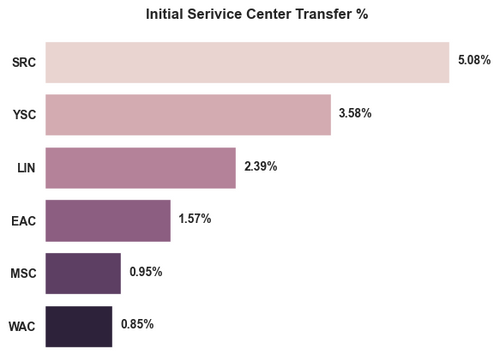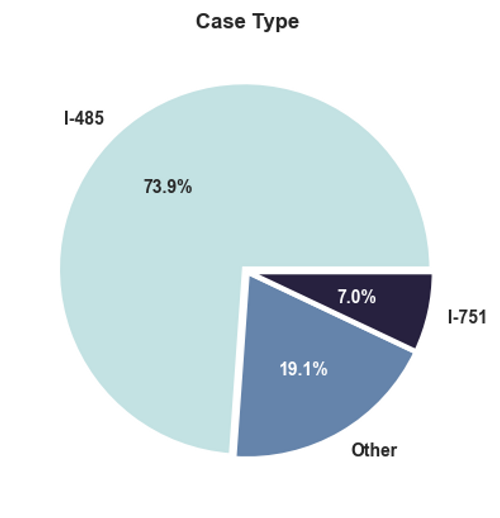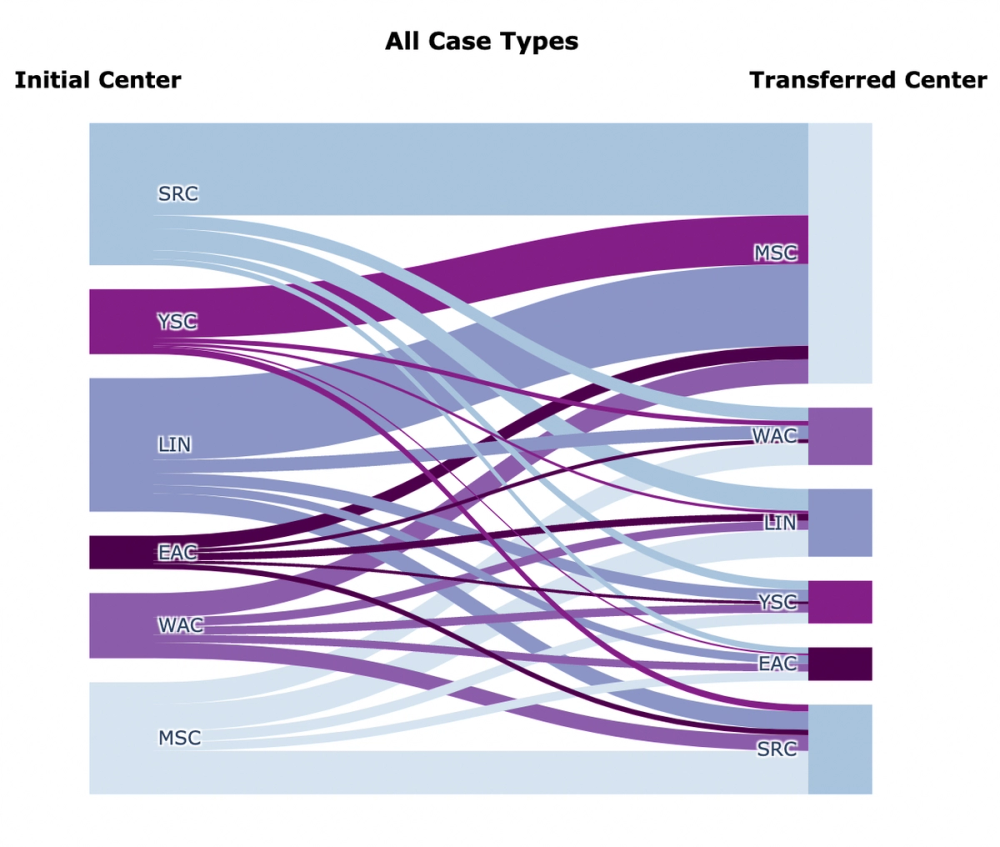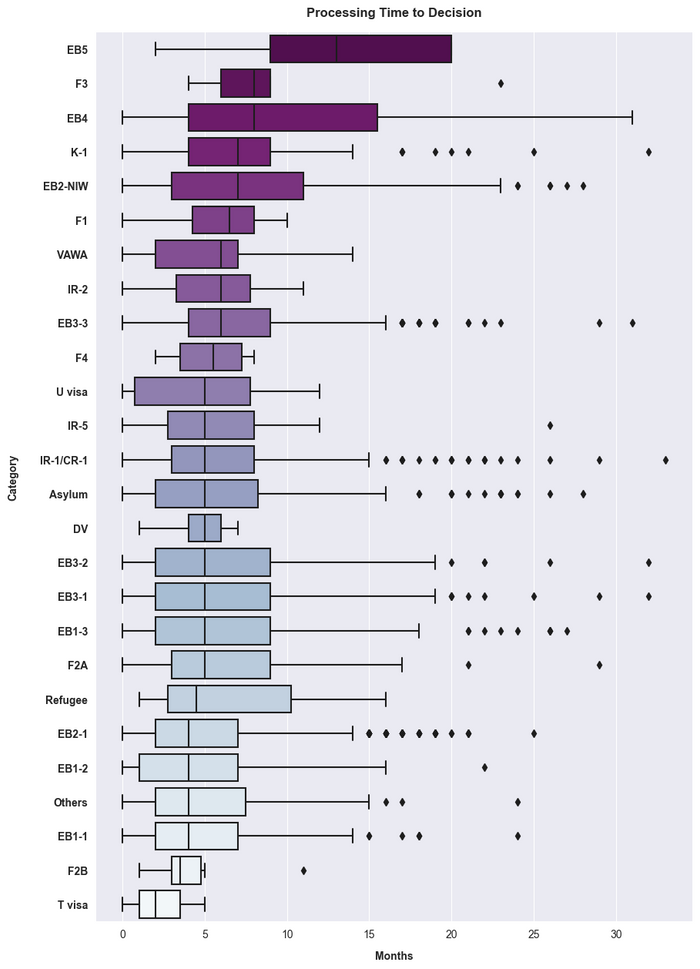Everything You Want to Know About Case Transfer
Why Are Cases Transferred?
When filing a form to U.S. Citizenship and Immigration Services (USCIS), the applicant will have a receipt number starting with 3 characters and usually indicates the responsible service center. Due to the backlog, USCIS may transfer some ongoing cases between service centers to promote timely processing. Once a case gets transferred, the applicant will receive one or multiple transfer notices about the next service center and the exact reason for the transfer. The receipt number of your case will not change.

The reasons for transfer usually include but are not limited to service center workload, jurisdiction, interview necessity, relocation, or other clerical issues. Therefore, case transferring is a possible and normal step during the case processing period. Applicants do not need to worry and there is usually nothing much you can do unless USCIS assigns further instructions.

More information about case number: What is the Green Card Number?
The Fiscal Year 2022 Overview
In FY 2022 (October 1, 2021 ~ September 30, 2022), more than 194K cases were transferred, representing approximately 2.26% of the total number of cases in progress. Following are the most common transfer notices, and a transferred case may receive one or more consecutively. In general, nearly 42% of our users directly received a decision on their case after the transfer notice. You can use our USCIS Case Status Message Explorer to check the next step information of a specific case category.

Over 70% of transferred cases are from Texas Service Center (SRC) or Nebraska Service Center (LIN), and the remaining may be from National Benefits Center (MSC) or other centers. For transfer rate within each service center, Texas Service Center (SRC) and Nebraska Service Center (LIN) are also at the top level. A noteworthy point is that Potomac Service Center (YSC) cases have a relatively higher transfer rate, even though its transfers do not account for a significant portion of the total number of transferred cases.


For ongoing cases, the top three case types are I-765, I-131, and I-485, which cover 18%, 10%, and 9% of the total amount respectively. As to the transferred cases, I-485 occupies as high as 74% portion and the transfer rate is also the second highest. Though I-824, I-751A, and I-485J cases have less than 4% in the overall transferred cases, their transfer rates are at a high level.


What’s the next step after transferring? Check USCIS Case Status Message Explorer!
Where Are the Cases Going?
The case transferring route highly depends on the USCIS service centers’ workload and office jurisdiction for exact cases, which is not that predictable. However, we still can find some patterns according to the transfer flow. All five service centers have some cases that were transferred to the National Benefits Center (MSC), especially for the top 3 transfer rate centers, Texas Service Center (SRC), Potomac Service Center (YSC), and Nebraska Service Center (LIN). In turn, the National Benefits Center (MSC) will also distribute casework to the five centers.

When we look at case type I-485, over half of the transferred cases are going to the National Benefits Center (MSC) from Nebraska Service Center (LIN) or Texas Service Center (SRC). That’s because, in April 2022, USCIS directed a big resource and workforce reallocation. All adjudication of Employment-Based (EB) Form I-485 except for the 4th preference petitions in the Texas Service Center (SRC) and Nebraska Service Center (LIN) was stopped, and corresponding cases were transferred to the National Benefits Center (MSC).

When Will the Transferred Cases Be Processed?
After a case gets transferred, the processing time in the new center is expected to be shorter compared with staying in the previous one. But the actual processing speed is still influenced by multiple factors, such as office workload, current status, and interview requirements. If your case has completed an interview prior to transfer, or if USCIS determines that the interview is unnecessary and can be waived, then the National Benefits Center (MSC) will complete the final jurisdiction and the processing time will be much faster.
In the figure of processing time distribution below, each box covers the 25th quartile to the 75th quartile data points. If your case is transferred to the National Benefits Center (MSC) or Potomac Service Center (YSC), it will probably get a decision within 1 to 3 months. Other service centers’ processing may last longer, the median time is about 3 or 4 months, but the exact time for the majority varies from 1 to 8 months. You can also check more detailed time distribution between steps on the Lawfully premium analysis page.

What’s the time for the next step? Try Lawfully Analysis Pro!
More About Transferred I-485
As mentioned before, there are a large number of Employment-Based (EB) cases that were reallocated from the Nebraska Service Center (LIN) and Texas Service Center (SRC) to the National Benefits Center (MSC) in the last fiscal year, accounting for 60% of the total transferred I-485 cases. For Family-Based (FB) and OTHERS, most of them are transferred from the National Benefits Center (MSC) to other centers.

In addition to the EB cases, there is also a great portion of the Immigrant Visa for a Spouse of a U.S. Citizen (IR1 or CR1) cases that were transferred to the National Benefits Center (MSC).

For I-485 processing time after transfer, as we can see, the Employment-Based (EB) cases processing time has a larger range than that of Family-Based (FB) cases. The median Employment-Based (EB) processing time is 4~12 months, EB2-NIW processing can last over 22 months, and the maximum processing time of EB4 can reach beyond 30 months. Family-Based (FB) cases were processed a little bit faster, generally within 1 year, and Unmarried Sons and Daughters (21 Years of Age and Older) of Lawful Permanent Residents (F2B) can expect a decision within 5 months. In other categories, Diversity Immigrant Visa (DV) and Victims of Human Trafficking (T visa) also have relatively faster processing.

We hope this article has given you a clearer picture of case transfer. More questions about your case? Ask in the Consultation Lite, an immigration expert is ready to help you!
*All data from Lawfully and USCIS database